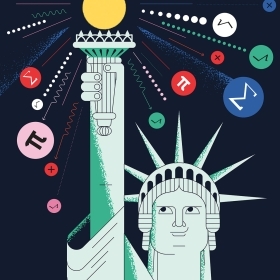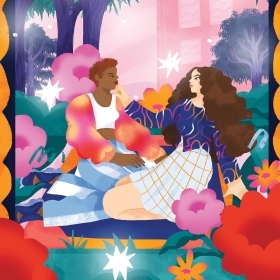One of my favorite features of my new office, which I moved into in November when I was named editor of Wellesley, is the bookcase of bound volumes of magazines going back to the first issue in October 1916.

One of my favorite features of my new office, which I moved into in November when I was named editor of Wellesley, is the bookcase of bound volumes of magazines going back to the first issue in October 1916.
In that inaugural issue, Josephine H. Batchelder, class of 1896 and chair of the alumnae publishing committee, said that the magazine was founded with the conviction that Wellesley’s alumnae have “opinions to offer both upon local topics and upon issues of wider import” and are doing “interesting and various things in the world of which they will not be unwilling to speak,” and that the campus is “alive” with a community that is solving problems “architectural, social and academic.”
More than 100 years later, Wellesley is still striving to solve the world’s pressing problems. Last year, the College received a grant from the Carnegie Corporation to partner with Spelman College and the Global Institute for Women’s Leadership at King’s College London to host a virtual summit focused on the economic impact of the pandemic on women, particularly women of color. At the April 1–2 summit led by Olga Shurchkov ’01, associate professor of economics and director of the Knapp Social Science Center, and Layli Maparyan, the executive director of the Wellesley Centers for Women and professor of Africana studies, Wellesley faculty, along with experts and policymakers from around the globe, will convene to develop an agenda for systemic changes required to advance women’s economic equality. Alumnae will be invited; keep an eye out for communications from the College. In the meantime, we asked Shurchkov and four other alumnae with myriad perspectives on gender gaps in the economy to give us their views on this pivotal moment in history (“Toward an Equal Economy”).
Meanwhile, in the classroom, students eager to combine their interest in math with their passion for politics and social justice have been drawn to Wellesley’s new Institute of Mathematics and Democracy, co-founded by mathematics professors Ismar Volić and Stanley Chang (“How Math Can Save Democracy”). (And before you comment on our infographic: Yes, we know that in reality peppermint stick pie would handily win more than 50% of the votes from the get-go.) The 1916 issue of the magazine also featured the democratic process. In “What California Women Have Done With the Ballot,” former Wellesley instructor and sociologist Mary Roberts Coolidge gave her perspective on the effect of California women—at least, white women—earning the right to vote in 1911.
Of course, one feature that could never have run in 1916 is our story about two-alum couples (“We Met at Wellesley”). Thank you to Amy Huang ’99, a WCAA board member, for suggesting the story, and to all the alums who spoke with Amy Mayer ’94 about their experiences. As a bisexual woman, I am often amazed at the progress that has happened in my lifetime—and sometimes dismayed at how far we have to go. I am reminded of a conversation I had with AJ Guerrero, Wellesley’s coordinator for LGBTQ+ programs and services, about the many students who are not able to be open about their sexual orientations and gender identities at home. That’s why, like Anna Ferrard-Zeiders ’91, I’ve come to realize that “one has a responsibility to be out there showing that this is a positive thing.”
I am honored to serve as Wellesley magazine’s ninth editor. I look forward to sharing stories about the College and our alums with you—in the pages of the print magazine and online—and I hope you will be in touch.


